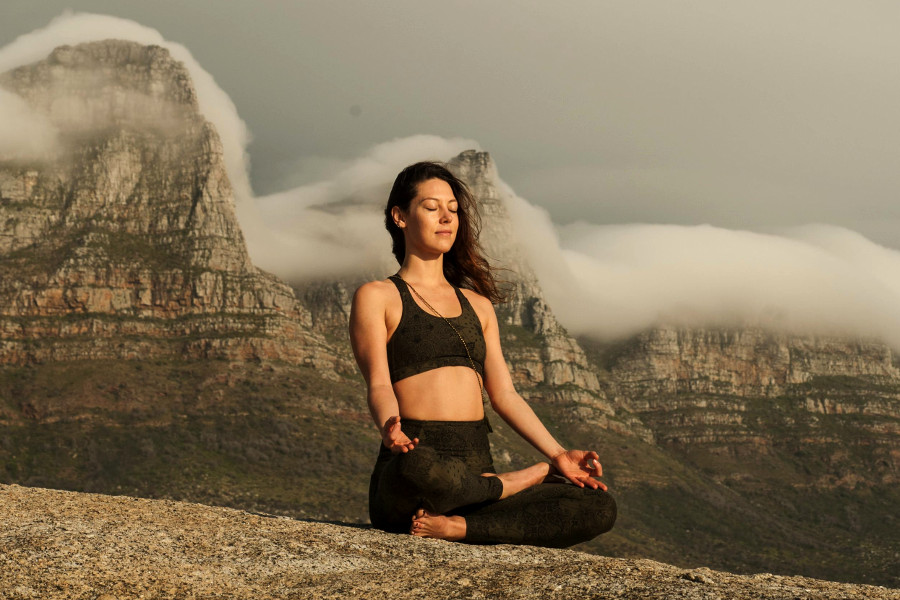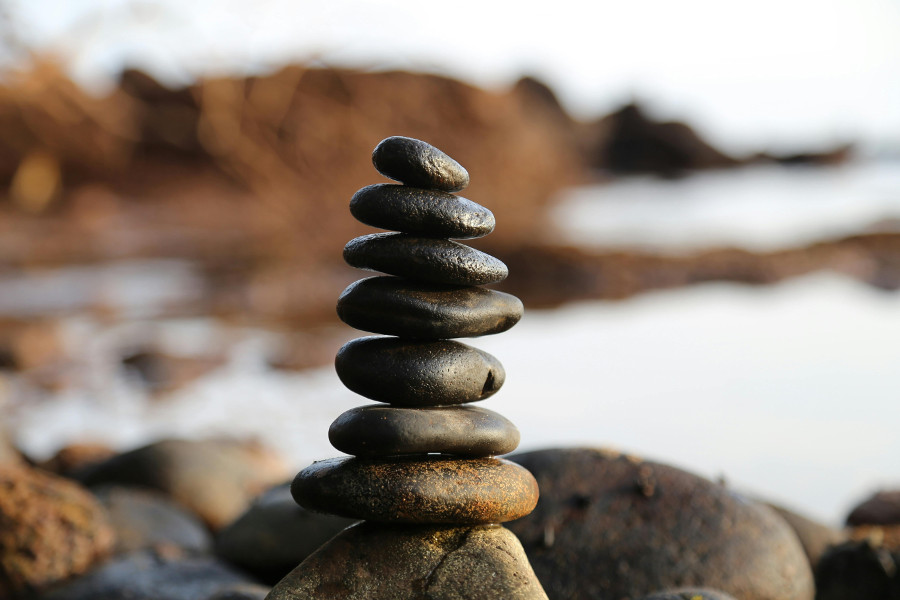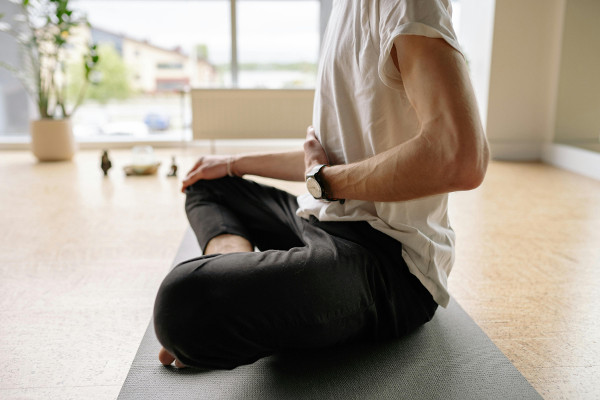How to Meditate: Essential Tips and Techniques for Inner Peace and Focus
Meditation is more than just a practice – it’s a path to mental clarity, emotional balance, and greater well-being. Whether you're just starting or looking to deepen your practice, understanding the basics is key. In this guide, we’ll explore common questions about meditation, from its benefits to different techniques you can try. Learn how to meditate effectively and create a lasting habit that supports stress relief, improved focus, and emotional calm in your everyday life.

What is meditation?
Meditation is basically a simple yet powerful way to slow down and reconnect with your inner world. In a life that often feels fast, noisy, and demanding, meditation invites you to pause, breathe, and just be. It’s not about switching off your thoughts entirely, but rather about watching them come and go without getting tangled up in them. You don’t need anything fancy – just a quiet moment, a comfortable position, and the intention to turn inward. People have been meditating for thousands of years, and for good reason: it helps you become more aware, more balanced, and more in tune with yourself. When practiced regularly, it’s like giving your mind a much-needed rest, which can help you feel calmer, more grounded, and more resilient in everyday life.
What are the health benefits of meditation?
The benefits of meditation go far beyond just feeling relaxed for a few minutes. It’s like a gentle medicine for the mind and body, with effects that build over time. Meditation has been shown to reduce stress by calming down the nervous system, which helps lower blood pressure and ease muscle tension. It can also help you sleep better, improve your concentration, and even boost your mood. Regular practice creates more space between you and your thoughts, so you’re less likely to be overwhelmed by them. And that’s not all – some studies suggest meditation can support your immune system and help with chronic pain. In a world where burnout and anxiety are common, meditation can be a small, daily step toward long-term well-being and emotional balance.
How can meditation help with stress, anxiety, sleep, or focus?
Stress, anxiety, trouble sleeping, and poor concentration are unfortunately all too common in today’s world. We’re constantly switched on, and our minds rarely get a break. That’s where meditation comes in. By gently bringing your attention to the present moment – often through the breath or a calming sound – you create space between yourself and the noise. Meditation helps your body shift out of “fight or flight” mode and into a state of rest and recovery. It slows the heart rate, relaxes the muscles, and gives the mind a chance to settle. If you can’t sleep, a short meditation before bed can quiet racing thoughts. If you feel scattered, it can bring clarity. Like watering a plant, the more you nurture this practice, the more you’ll see it grow into greater calm and focus.
What are the different types of meditation (mindfulness, loving kindness, body scan, etc.)?
There are many different ways to meditate, and each one offers something a little different. Mindfulness meditation is one of the most popular – it’s all about paying attention to what’s happening right now, without judgment. That might mean watching your breath or noticing how your body feels. Then there’s loving-kindness meditation, where you silently send kind wishes to yourself and others. It’s a beautiful way to cultivate compassion and warmth. Body scan meditation involves slowly moving your awareness through the body, noticing any sensations or tension. It’s often used for deep relaxation. There are also practices that use mantras, sounds, or even movement. Each type offers a slightly different doorway into presence and peace. The key is to explore and find the style that feels most natural to you.

How do you meditate?
Meditation isn’t complicated, though it might feel unfamiliar at first. Start by finding a quiet place where you won’t be disturbed. Sit comfortably – on the floor, in a chair, or even lying down. Let your hands rest gently, close your eyes if you like, and take a few slow breaths. Then, choose something to focus on – like your breath, a word or phrase, or even the sounds around you. When your mind wanders, which it definitely will, just notice that it’s happened and gently return to your focus. That’s it. You’re not trying to stop thinking – you’re just learning to notice your thoughts without getting pulled away by them. With time, this simple practice becomes a powerful way to bring calm, clarity, and steadiness into your day.
How long and how often should I meditate as a beginner?
If you’re just starting out, don’t worry about meditating for a long time. Even five minutes a day can make a difference. The important thing is to be consistent – like brushing your teeth or drinking water. Meditation is a habit, and the more regularly you do it, the more natural it becomes. As you get used to it, you might find that 10 or 15 minutes feels good. Some people meditate for half an hour or more, but that’s something you can build up to if and when it feels right. It’s not a race. What matters most is that you show up, even when your mind is busy or distracted. Over time, these quiet moments can become an anchor in your life – something you look forward to, even on tough days.
What are the best apps for meditation?
In our tech-filled world, meditation apps offer an easy way to get started. Headspace and Calm are two of the most popular, known for their friendly guides and a wide variety of programs – from stress relief to better sleep. Insight Timer is a great choice if you want more freedom. It offers thousands of free meditations, music tracks, and talks by teachers from all over the world. If you’re looking for something more down-to-earth and science-based, Ten Percent Happier is especially good for skeptics or those who prefer a no-frills approach. Smiling Mind is another excellent app, particularly for kids and teenagers. Each app has its own vibe, so it’s worth trying a few to see which one suits you best. Sometimes, just having a gentle voice guide you can make all the difference.
What should I focus on during meditation (e.g., breath, mantra)?
When it comes to meditation, the focus point is like your anchor – it helps you stay present. For many people, the breath is a natural choice. It’s always there, moving in and out, and it gives the mind something steady to rest on. Others might prefer repeating a word or phrase – a mantra – which can create a rhythm that’s calming and grounding. Some like to focus on the feeling of their body, a sound, or even a visual image. There’s no right or wrong choice. The goal isn’t to block out thoughts entirely, but to notice when your mind drifts and gently return your attention. Over time, the more you practice bringing your focus back, the easier it gets. It’s like training a puppy – kindly, patiently, and without getting frustrated when it wanders.

What is guided visualization meditation and how does it work?
Guided visualization is a gentle and imaginative form of meditation that takes you on a journey through your own mind. With the help of a guide – either in person or through an app or recording – you’ll be invited to picture calming scenes or uplifting situations. Maybe it’s a quiet forest, a peaceful beach, or a warm light that fills your body with ease. The guide uses words and imagery to help you settle in and let go. It’s especially helpful if you find it hard to sit in silence, because your mind has something to follow. This type of meditation taps into your senses and imagination, creating a mental space where you can relax deeply or even find clarity and inspiration. It’s like taking a mini vacation for your soul, without ever leaving home.
Why does my mind wander, and how do I stop it?
If your mind wanders during meditation, you’re in good company – it happens to everyone. The mind’s job is to think, and it doesn’t like to be still for long. But here’s the thing: the wandering itself isn’t a problem. In fact, noticing that you’ve wandered and gently coming back to your focus is where the real magic happens. That’s the practice. It’s like strengthening a muscle – the more you return, the stronger your attention becomes. There’s no need to fight your thoughts or force silence. Just let them pass by, like clouds in the sky. Over time, the mind does settle more easily. But even on busy-brain days, your meditation is still “working.” Each time you come back to your breath or mantra, you’re building patience, awareness, and inner calm.
What is trauma-informed meditation or trauma-sensitive mindfulness and whom is it for?
Trauma-informed meditation is a more gentle and flexible way to practice mindfulness, especially for those who’ve been through overwhelming or painful experiences. Standard meditation techniques can sometimes bring up difficult memories or sensations, and that can be triggering. Trauma-sensitive mindfulness creates a safer space by offering choice and respecting boundaries. You might be encouraged to keep your eyes open, focus on the environment around you, or shift your attention to something comforting. There’s no pressure to “go deep” – just to stay grounded and feel safe. This approach is especially helpful for people with PTSD, anxiety, or a history of trauma, but really, anyone can benefit from it. It reminds us that mindfulness isn’t about pushing through discomfort – it’s about honoring where we are and gently finding our way back to balance.
How can I develop a meditation habit?
Creating a meditation habit doesn’t have to be hard. In fact, it’s easier when you keep it simple. Pick a time of day that works for you – maybe right after you wake up or before you go to bed. Then, choose a quiet spot where you feel comfortable. Start small, with just a few minutes a day. You can use an app, a timer, or even just your breath as a guide. What matters most is showing up regularly. Some people find it helpful to write down how they feel afterward, which can build motivation. Others set a reminder or pair meditation with something they already do, like having tea or stretching. Over time, this quiet practice becomes part of your rhythm – a gentle pause in the middle of life’s noise.
Resources, further reading
Here are a few useful resources for further reading:
- Mindfulness Meditation and Stress Reduction in Nursing Students
- Effectiveness of Mantra-Based Meditation on Mental Health
- Systematic Review of Meditation Techniques in Treating Medical Illness
- Verywell Mind: Transcendental Meditation and Its Many Benefits
- Verywell Health: Meditation Types and Benefits
- Reddit: r/Meditation
Enjoy your journey into the world of meditating.



